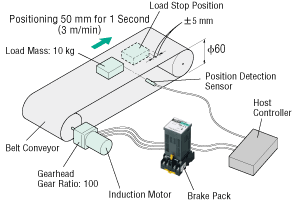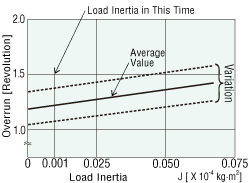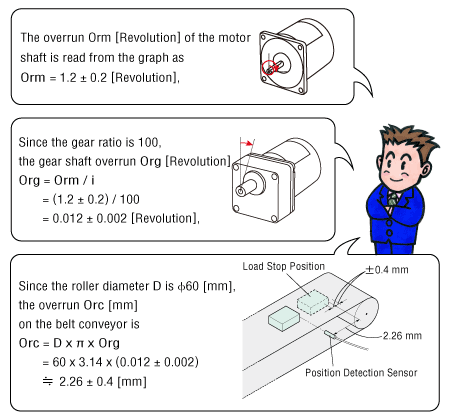What is the Stopping Accuracy of an AC Motor?


-

Ms. Ori, can I ask you something?
-

What is it, Vex? You've done something again, haven't you?
-

No, I haven't!
I received a request from a customer who wanted to improve the stopping accuracy of their belt conveyor. I introduced stepper motors and servo motors for stopping accuracy, but they said that they don't want to change the system configuration of the AC motors which they are using right now. -

Did you introduce the brake pack that can bring the AC motor to an instantaneous stop?
-

Of course! With the brake pack, the overrun can be limited to 1~1.5 revolutions of the motor shaft.
Click here to read the article
But I wasn't sure how much repetition variation there would be when I stopped it with the sensor...
The desired variation on the belt conveyor is ±5mm.Mechanism Diagram: Belt conveyor 
-

Then take a look at this graph. This is the variability of the overruns when the brake pack brings the motor to an instantaneous stop.
You can see that as the load inertia increases, the overrun also increases.Induction motor braking characteristics (reference values)
Output: 6 W, Voltage: 100 VAC, Frequency: 60 Hz
- *The characteristics vary depending on the product. Since only the load inertia is considered in the data, the overrun will be smaller if there is a frictional load.
-

I see! The motor shaft overrun of about 1~1.5 revolutions you told me before was a value that took into account the variation caused by different load inertias.
-

You’re right. Then, can you tell me how much overrun and variation are in the belt conveyor this time?
-

Let me calculate.

-

So the overrun is 2.26 mm, and the variation is ±0.4 mm.
-

You've improved, Vex. You're right.
-

Even with AC motors, the variation can be made so small. If you adjust the overrun by the sensor position, the only difference will be the actual variation. I calculated, and understand well.
-

Strictly speaking, we also need to consider the scan time of the programmable controller and the backlash of the gearhead.
The backlash of the gearhead is about 1~2˚, so if we assume 2˚ (0.0056 revolutions), for example, we should consider the variation of 60 mm × 3.14 × 0.0056 rotations = 1.05 mm.
Also, in this case, since the gear ratio is 100, the variation in overrun is small, but with a lower gear ratio, the variation will be larger, so be careful.
If the customer wants more accurate positioning, it is better to choose a position control motor. -

I got it. Looks like the AC motor will be enough this time, so I'll introduce to the customer right away!
-

Hold on, Vex! Don't forget to introduce the AC speed control motor as well.
-

Of course! With the DSC Series, it's not just about instantaneous stop. It's a compact product with a full range of functions, including speed control, 4-speed operation, real-time speed monitoring, and alarm output.
AC motors are surprisingly amazing. I gave it a second glance!
- April 13, 2020 Updated with the latest information.